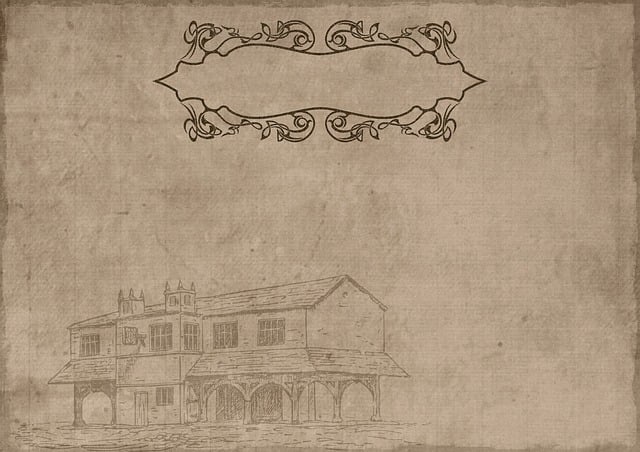Planning a roof replacement? This guide breaks down roofing material costs ($35-$250+/sq ft), highlighting durability and aesthetics. Size, complexity, terrain, local regulations, and installation impact expenses. Request detailed quotes from contractors for transparent labor and installation charges. High-quality materials reduce maintenance, increase property value (up to 15%), and offer superior long-term savings. This roof replacement cost guide ensures informed decisions tailored to your project's needs and budget.
Understanding material costs is a key step in any outdoor project, especially when it comes to roofing. This comprehensive guide offers an in-depth look at navigating the roof replacement process, focusing on material expenses. We’ll explore common roofing materials and their varying costs, delve into factors influencing price tags, and provide crucial insights for budgeting labor and installation charges. By the end, you’ll be equipped with knowledge to make informed decisions and ensure a successful roof replacement project.
Assessing Roofing Materials: An Overview of Common Types and Costs
When planning an outdoor project, particularly a roof replacement, understanding material costs is paramount. The variety of roofing materials available can be overwhelming, with each offering unique benefits and price points. From traditional asphalt shingles to premium metal or tile options, the choice is vast. This guide breaks down common types and their associated costs to help you make informed decisions for your project.
Asphalt shingles, the most popular choice due to affordability and ease of installation, range from $35 to $70 per square foot, making them an excellent entry point for budget-conscious homeowners. On the other end of the spectrum, metal roofing, known for its durability and low maintenance, can cost anywhere from $100 to $250 or more per square foot. Tile roofs, offering both aesthetic appeal and longevity, fall in between with prices typically ranging from $80 to $150 per square foot. These price variations reflect not only the materials themselves but also their durability, warranty options, and installation complexities.
Factors Influencing Roof Replacement Expenses
When considering a roof replacement, several factors significantly influence the expenses involved. One of the primary considerations is the size and complexity of the roof. Larger roofs will naturally incur higher costs due to increased material requirements and labor time. The choice of materials also plays a crucial role; while traditional shingles are more affordable, high-end options like metal or tile roofing can dramatically escalate the cost. Additionally, factors like terrain accessibility, roof pitch, and the need for additional structural support can add to the overall price tag.
Another critical aspect is the level of customization and design complexity. Simple replacement projects might stick to standard sizes and styles, keeping costs down. However, unique or custom designs may require specialized materials and skilled labor, driving up expenses. Weather conditions and local regulations also come into play; areas prone to extreme weather often mandate more robust roofing materials, affecting the budget. Moreover, ensuring compliance with local building codes and obtaining necessary permits can add an extra financial layer to roof replacement projects.
Budgeting for Additional Labor and Installation Charges
When planning outdoor projects, such as a roof replacement, it’s crucial to account for additional labor and installation charges beyond the cost of materials. These expenses are often overlooked but can significantly impact your budget. Professional installers charge for their time and expertise, especially for complex tasks or unique design elements. The complexity of the work, accessibility of the site, and any special requirements will influence these costs.
In a comprehensive roof replacement cost guide, these hidden fees should be clearly outlined to avoid surprises. It’s essential to receive detailed quotes from multiple contractors who can break down labor rates and installation charges for your specific project. This transparency ensures you have an accurate understanding of the financial commitment involved in transforming your outdoor space.
Long-Term Savings and Return on Investment (ROI) Considerations
When planning outdoor projects, understanding material costs is just the first step; long-term savings and return on investment (ROI) considerations are equally vital. While initial expenses for materials like a roof replacement cost guide can be significant, prioritizing quality and durability offers substantial future benefits. High-quality materials not only withstand harsh weather conditions but also reduce the need for frequent repairs or replacements, lowering overall maintenance costs over time.
Furthermore, many outdoor improvements increase the value of your property, which translates into increased ROI when it comes to selling or refinancing. According to industry reports, well-maintained and upgraded outdoor spaces can boost a home’s resale value by up to 15%. Thus, investing in robust materials for your projects not only ensures longevity but also provides a solid financial return, making it a wise decision in the long run.
Understanding material costs is a key step in any outdoor project, especially when it comes to roof replacements. This comprehensive guide has walked you through the various factors influencing these expenses, from roofing materials and labor charges to long-term savings. By factoring in these elements, you can create a robust budget and make informed decisions that ensure both quality and affordability. Remember, proper planning is the foundation for a successful and cost-effective roof replacement project.
